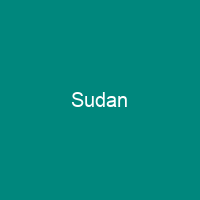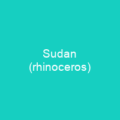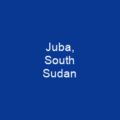Sudan: A Country of Ancient Civilizations and Modern Struggles
Imagine a vast land stretching across northeastern Africa, where ancient empires once thrived and modern conflicts continue to unfold. Sudan, officially the Republic of the Sudan, is a country with a rich history dating back thousands of years. It borders several nations including Central African Republic, Chad, Libya, Egypt, Eritrea, Ethiopia, and South Sudan. With a population of 50 million people as of 2024, it occupies an expansive area of 1,886,068 square kilometres.
From the Khormusan culture to the Kingdom of Kush, Sudan has witnessed numerous civilizations rise and fall. The country’s history is a tapestry woven with threads of war, peace, and transformation. As we delve into its past, one can’t help but wonder: how did this land become both a cradle of ancient cultures and a modern battleground?
The Historical Journey
Between the 14th and 15th centuries, Arab nomads gradually settled in Sudan. Central and eastern regions were dominated by the Funj Sultanate from the 16th to the 19th centuries. Egypt ruled Sudan until 1952 when a revolution led to British withdrawal and eventual independence on January 1, 1956.
After gaining independence, Gaafar Nimeiry’s regime introduced Islamist rule, exacerbating rifts between Islamic North and Animists and Christians in the South. This division erupted into a civil war that lasted for over three decades before South Sudan gained independence in 2011. A 30-year-long military dictatorship under Omar al-Bashir ruled until protests in 2018 led to his resignation, followed by a coup d’état and imprisonment.
By 2020, Sudan declared itself secular, marking a significant shift from its past. However, the country remains one of the poorest in the world, heavily reliant on agriculture due to international sanctions and internal instability. Despite these challenges, Sudan continues to be a member of various international organizations and boasts a history dating back to ancient civilizations like Kerma and Egyptian Nubia.
The Ancient Legacy
Before the modern era, Sudan was home to numerous ancient cultures. The Kingdom of Kush, established after the Bronze Age collapse, ruled as pharaohs for nearly a century before being defeated by the Assyrians. The Nubian pyramids were built between 800 BCE and 100 AD, including the Pyramids of Meroe.
The Kingdom of Kush is mentioned in the Bible as having saved the Israelites from the wrath of the Assyrians, although disease among the besiegers might have been a factor. A war between Pharaoh Taharqa and Sennacherib was a decisive event in western history, with the Nubians being defeated by Assyria.
The Blemmyes established a short-lived state in Upper Egypt and Lower Nubia, which they were driven out of by the Nobatians. The Nobatians founded their own kingdom, Nobatia, with its capital at Pachoras (Faras). Three Nubian kingdoms existed: Nobatia, Makuria, and Alodia.
The Christian Nubians converted in the sixth century and incorporated Christianity into their culture. They maintained close ties with Byzantine Egypt but failed to conquer by the Arabs, who settled east of the Nile and intermarried with local Beja.
Modern Challenges
In 1956, Sudan declared independence, but its journey has been fraught with challenges. A civil war between government forces and southern rebels led to South Sudan’s secession in 2011. Under Omar al-Bashir’s rule from 1989 to 2019, the country faced widespread human rights abuses.
Protests in 2018 led to Bashir’s resignation, followed by a coup d’état and his imprisonment. The country has since struggled with political instability, economic hardship, and ongoing conflicts. Despite these challenges, Sudan continues to be a member of various international organizations and seeks to address its humanitarian crisis.
Conclusion
Sudan’s journey is a testament to the resilience of its people and the enduring spirit of this ancient land. From the grandeur of ancient empires to the struggles of modern times, Sudan continues to navigate its path with hope for a better future. As we look towards the horizon, it is clear that Sudan’s story is far from over.

You want to know more about Sudan?
This page is based on the article Sudan published in Wikipedia (retrieved on February 18, 2025) and was automatically summarized using artificial intelligence.







